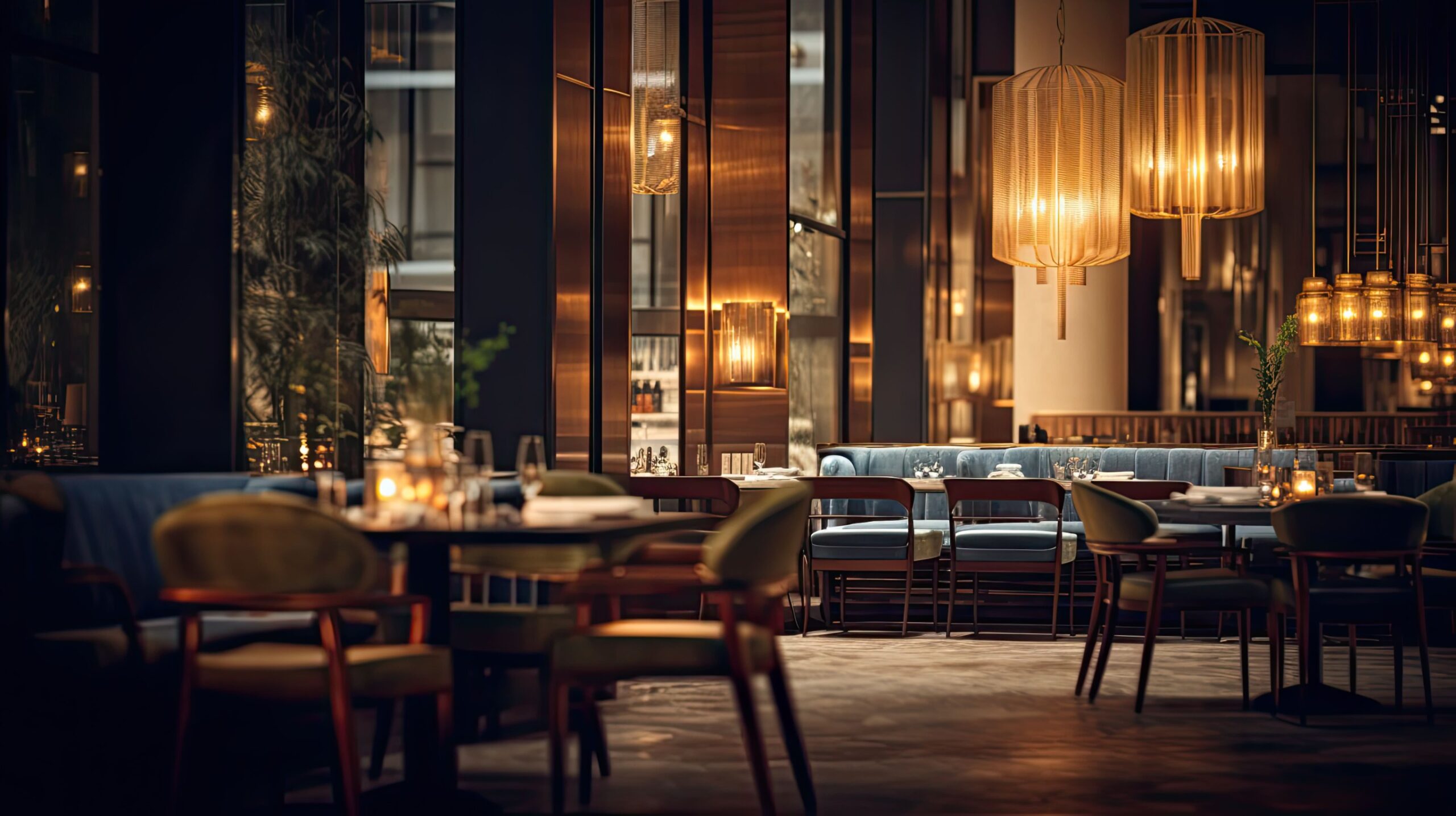Design Lighting for Restaurants: important elements to keep in mind
Lighting is a crucial element in restaurant design. It not only defines the atmosphere and aesthetics of the restaurant, but also affects the overall customer experience. Designing restaurant lighting means considering various factors beyond just the functionality of the lights. In this article, we will explore the importance of lighting in restaurants, aspects to consider when designing, and the latest trends in restaurant lighting design.
The Importance of Lighting in Restaurants
Creating the Atmosphere
Lighting plays a key role in creating the atmosphere of a restaurant. The right lighting can transform an ordinary room into a welcoming and inviting space. Warm, soft lights, for example, can create an intimate and relaxing atmosphere, ideal for romantic dinners. Conversely, brighter lights can make the environment more dynamic and suitable for restaurants with high customer turnover.
Aesthetic Enhancement
Well-designed lighting highlights the architectural and decorative elements of a restaurant. It can accentuate wall textures, emphasize artwork or decorations, and create focal points within the space. Strategic lighting can also be used to guide customers’ attention to specific areas, such as the bar or open kitchen.
Influence on Customer Experience
In addition to enhancing aesthetics and atmosphere, lighting directly affects the customer experience. Good lighting can make customers feel more comfortable, influence their perception of food and service, and even affect the length of their stay. Studies have shown that lighting can affect appetite and mood, making choosing the right lighting a critical aspect of restaurant design.
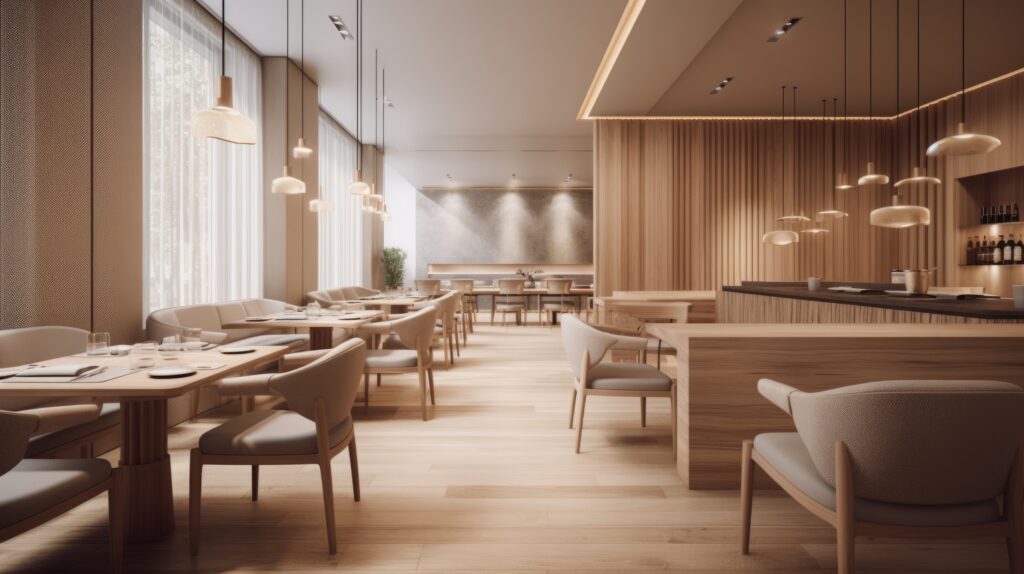
Aspects to Consider when Designing Restaurant Lighting
Features
Functionality is the first aspect to consider when designing restaurant lighting. It is important to ensure that all areas of the restaurant are adequately lit to ensure the safety and comfort of customers and staff. Key areas to consider include the entrance, dining room, bar, kitchen, and bathrooms.
Lighting Levels
It is essential to design the lighting to create different levels of brightness. This helps define different areas of the restaurant and create a sense of depth and visual interest. For example, brighter lights can be used in work and preparation areas, while dimmer lights are ideal for seating areas.
Types of Lighting
Restaurant lighting should include a combination of ambient, accent, and task lighting. Ambient lighting provides general, uniform light, accent lighting highlights particular decorative elements, and task lighting is used to illuminate specific areas where more light is required, such as tables or the bar.
Light Control
The integration of lighting control systems can greatly improve the flexibility of lighting in a restaurant. Dimmers and intelligent lighting systems allow the intensity and color temperature of lights to be adjusted according to the time of day, desired atmosphere, or specific events. This level of control allows restaurants to easily adapt lighting to the needs of the moment.
Sustainability
Sustainability is another crucial aspect of restaurant lighting design. The use of energy-efficient LED lights not only reduces operating costs, but also helps minimize environmental impact. In addition, smart lighting systems can optimize energy use, further reducing consumption and CO2 emissions.
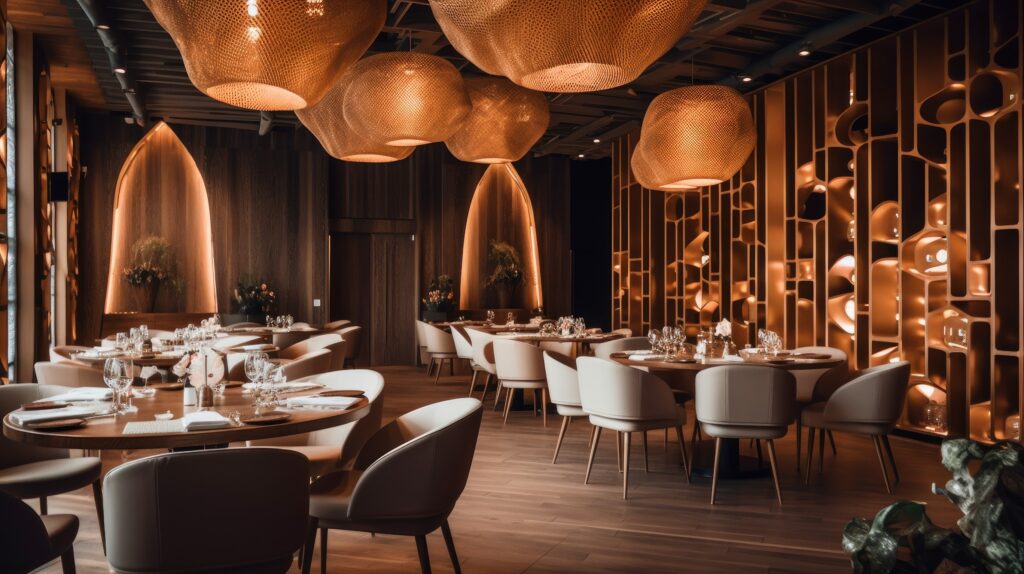
Latest Trends in Designer Lighting for Restaurants.
LED lighting
LED lights continue to dominate the lighting industry due to their energy efficiency, durability and versatility. In addition to offering a wide range of colors and intensities, LEDs can be integrated into innovative designs that enhance restaurant aesthetics. For example, LED strips can be used to create dynamic lighting effects, while LED spotlights can highlight specific architectural elements.
Intelligent Lighting
Smart lighting systems are becoming increasingly popular in restaurants.
These systems allow lighting to be controlled via apps or voice devices, making it easy to adjust light intensity, color and temperature.
In addition, they can be programmed to create customized lighting scenarios based on the time of day or current event, enhancing the customer experience.
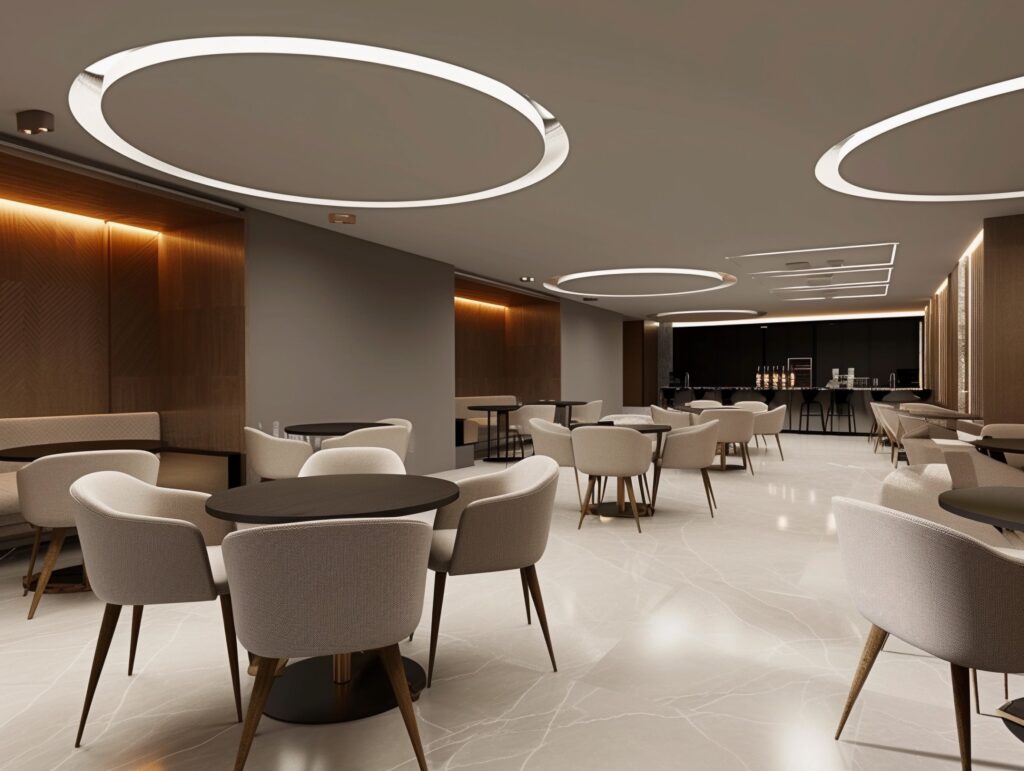
Minimalist Design
Minimalist design is a growing trend in restaurant lighting. Characterized by clean lines and simple shapes, this approach emphasizes functionality and aesthetics without overloading the space. The use of materials such as metal, glass, and wood in combination with discreet, well-positioned lights creates an elegant and contemporary environment.
Accent Lighting
Accent lighting is essential for creating focal points and highlighting specific elements of a restaurant’s design. This may include lighting artwork, textured walls or architectural details. By using adjustable spotlights and directional lights, you can create a dramatic effect that draws attention and adds visual depth to the space.
Lighting Customization
Lighting customization is an emerging trend that allows restaurants to tailor the lighting environment to customer preferences or event-specific needs. For example, programmable RGB lights can change color to create different atmospheres throughout the day or for special events. This level of personalization provides a unique and memorable experience for customers.
Natural Lighting
Taking advantage of natural lighting is an important aspect of restaurant design. Large windows, skylights and glass walls can be used to maximize the entry of natural light, creating a bright and inviting environment during the day. Natural lighting not only enhances the aesthetics of the restaurant, but also contributes to the well-being of customers and staff.
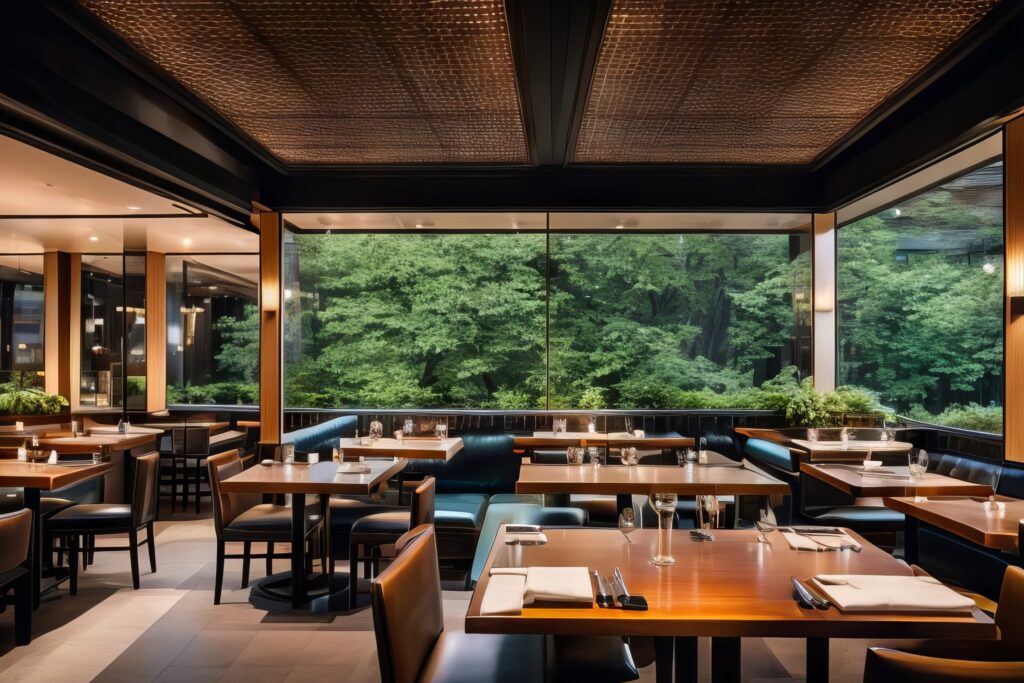
In summary
Designing restaurant lighting requires a combination of creativity, technical knowledge and attention to detail. The right lighting can transform a restaurant, enhancing the atmosphere, aesthetics, and customer experience. By adopting the latest trends and technologies, it is possible to create spaces that not only meet functional needs, but also aesthetic and sustainable ones.
When considering lighting for a restaurant, it is important to keep in mind functionality, lighting levels, light types, light control, and sustainability. The latest trends, such as LED lighting, smart systems, minimalist design, accent lighting, personalization, and natural lighting, offer a wide range of innovative solutions for creating unique and engaging spaces.
This guide is intended to be useful and informative for those who wish to learn more about designer lighting for restaurants. Continuing to explore and experiment can lead to the creation of extraordinary environments that leave a lasting impression on clients.
Contact the Lighting Design Team today to learn more about restaurant lighting solutions and trends!


